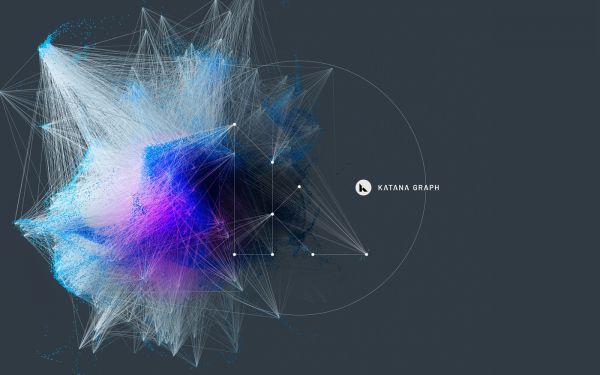Katana Graph announced today its collaboration with Intel to port and optimize the Katana Graph Engine (KGE) on Intel Xeon Scalable processors and Xeon-based clusters as well as on the upcoming line of Intel discrete GPUs including the GPU code-named “Ponte Vecchio.” They will also implement efficient solutions for graph problems on the optimized platform.
Katana Graph is the performance leader in scale-out graph computing. The KGE runs on both CPU and GPU platforms, and scales to hundreds of machines in production clusters. Based on the Galois system developed at the University of Texas at Austin, the KGE enables high-performance parallel computations on large-scale problems with unstructured data.
“As data sets become larger, there comes a point invariably when the data must be sparsified to keep computation and memory costs manageable,” said Keshav Pingali, CEO and cofounder of Katana Graph. “This happened in computational science twenty years ago and it is happening today in machine learning areas like deep neural networks. In our experience, graphs and hypergraphs are the natural way to model large unstructured data sets of this sort.”
Large unstructured data sets are the norm in social network analysis, security and authentication, electronic chip design tools, biomedical and pharma applications such as gene network analysis and medical knowledge graph mining, and epidemiological studies for modeling of the spread of infectious diseases like COVID. The KGE is applicable to any problem involving connected data.
Chris Rossbach, CTO and cofounder of Katana Graph adds, “Computing on large unstructured data sets is the paradigm of the future. Unlike other companies in this space, Katana Graph has a high-level programming model and a runtime system that are specialized for applications that deal with graphs and hypergraphs. This is why our analytics libraries are orders of magnitude faster than solutions from other vendors. We are excited to be working with Intel to bring high-performance scalable graph computing to Intel’s customers.”
The KGE has been used by a major defense contractor to implement a system for real-time intrusion detection in computer networks. The system builds online interaction graphs representing how users of the network interact with each other and with network resources; the graph engine is used to mine the interaction graphs to find forbidden interaction patterns, which are flagged as potential security threats.
The KGE has also been used to implement high-performance parallel modules to solve electronic circuit design problems including logic synthesis, hypergraph partitioning, placement and global routing. They are being evaluated by EDA tools companies for incorporation into their workflows. Projects that model pollution and epidemiological studies on the spread of COVID have used the graph engine to construct unstructured representations of 3-D space for finite-element computations.
“For deep analytics on large, unstructured data to scale into mainstream usage it will need to be deployable and performant on both volume CPUs and GPUs,” said Wei Li, Vice President, Intel Architecture, Graphics and Software, and General Manager, Machine Learning and Performance. “Our collaboration with Katana Graph will accelerate adoption of graph analytics on market-leading Intel Xeon Scalable processors as well as our upcoming GPUs, enabling more customers to take advantage of this insightful technique.”
The Enterprise version of the Katana Graph system, which runs on cloud platforms like AWS and Microsoft Azure, will also provide a full-featured graph database with scalable parallel querying, transactional execution for long-running computations, and extensive support for knowledge graphs.
Intel, the Intel logo and Xeon are registered trademarks of Intel Corporation or its subsidiaries.
Click Here to read the full press release.
